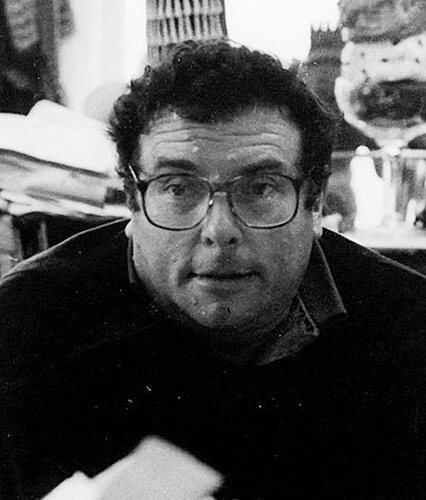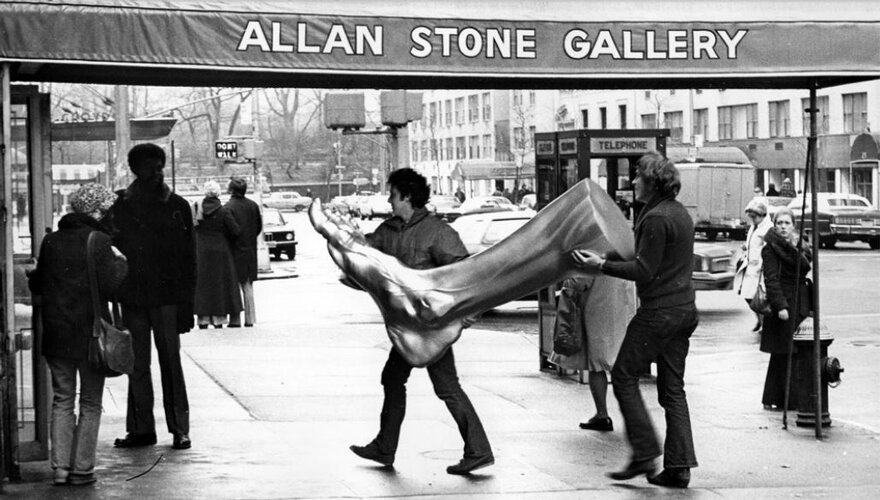299
299
wood and modeling clay construction 17¼ h × 14⅛ w × 2½ d in (44 × 36 × 6 cm)
estimate: $600–800
result: $390
follow artist
provenance: Acquired directly from the artist | Allan Stone Collection, New York
The present lot is among the powerful selection of works by women artists from the Allan Stone Collection. Not only was Allan Stone a pioneering supporter of Abstract Expressionism and emerging artists, he also celebrated works by women who were forging new ground in the world of art, often without the support or recognition of the larger art community. Driven by personal experience and the need for expression, these women created inventive works exploring politics, gender roles, storytelling, abstraction and art history.


He could make a visual decision very quickly. It was like love at first sight. He trusted his instincts.
Lorraine Shemesh


Founded in 1960 by art dealer Allan Stone (1932–2006), the New York gallery known today as Allan Stone Projects has been admired for over half a century. Celebrated for its eclectic approach and early advocacy of pivotal artists of the 20th century, Allan Stone Gallery was a leading authority on Abstract Expressionism, the New York dealer for Wayne Thiebaud for over forty years, and showed the works of Willem de Kooning, Franz Kline, Arshile Gorky, Joseph Cornell, John Graham and John Chamberlain. Stone also promoted the work of a younger generation of artists that were in conversation with other artists in his collection, working in the mediums of assemblage, collage and new modes of abstraction. In addition to modern masterworks and contemporary art, Allan Stone also collected and exhibited international folk art, Americana and important decorative arts and industrial design.
Jackie Ferrara b. 1929
Born in Detroit, American artist Jackie Ferrara is known for her architectural sculpture and installations. Ferrara studied briefly at Michigan State University but did not receive a degree or pursue other formal art education. Instead, Ferrara moved to New York in 1952 and immersed herself in the city’s art and performance scene. She performed in two Claes Oldenburg happenings and was involved in multiple productions at the Judson Memorial Church.
Absorbing the Minimalist cultural currents of the era, Ferrara began to develop her own aesthetic voice as a sculptor. Using everyday materials, she built constructions that resembled pyramids, ziggurats, and other architectural forms, maintaining that these were meant as abstractions and not architectural models. She was included in the Whitney Museum of American Art’s annual sculpture exhibition in 1970, as well as in the institution’s 1973 and 1979 biennials. Her first solo show was at A.M. Sachs Gallery in 1973, and she was awarded a Guggenheim Fellowship in 1976. As Nancy Princenthal wrote in 1992, “Ferrara’s sensibility is rooted in order as a pleasure principle. To appreciate her work is to share her joy in systems of organization, their multiplicity, and their permutations.
Ferrara’s approach to construction and environment was influential in redefining the scope of contemporary art, and she would go on to create many works of public art. Among such works are the 1988 Belvedere at the Walker Art Center and her 1999 Ampitheater at the Los Angeles County Museum of Art. Today, her works are held in the collections of the Museum of Modern Art, the Metropolitan Museum of Art, and the High Museum of Art, among others.
Auction Results Jackie Ferrara